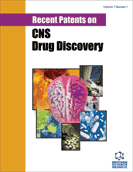Abstract
Evidence for the involvement of the Substance P (SP)/NK1 receptor system in the development and progression of cancer strongly supports its potential as a therapeutic target in malignancies. Novel strategies for approaching cancer treatment are urgently required particularly with regard to tumours of the central nervous system (CNS), which are notoriously difficult to effectively treat and associated with extremely poor prognosis for many patients. This is due, in part, to the presence of the highly specialised blood-brain barrier, which is known to restrict common treatments such as chemotherapy and hinder early tumour diagnosis. Additionally, tumours of the CNS are difficult to surgically resect completely, often contributing to the resurgence of the disease many years later. Interestingly, despite the presence of the blood-brain barrier, circulating tumour cells are able to gain entry to the brain and form secondary brain tumours; however, the underlying mechanisms of this process remain unclear. Tachykinins, in particular Substance P, have been implicated in early blood-brain barrier disruption via neurogenic inflammation in a number of other CNS pathologies. Recent evidence also suggests that Substance P may play a central role in the development of CNS tumours. It has been well established that a number of tumour cells express Substance P, NK1 receptors and mRNA for the tachykinin NK1 receptor. This increase in the Substance P/NK1 receptor system is known to induce proliferation and migration of tumour cells as well as stimulate angiogenesis, thus contributing to tumour progression. Accordingly, the NK1 receptor antagonist presents a novel target for anti-cancer therapy for which a number of patents have been filed. This review will examine the role of Substance P in the development of CNS tumours and its potential application as an anti-cancer agent.
Keywords: Blood-brain barrier, CNS tumours, glioma, metastases, substance P, tight junctions.
Recent Patents on CNS Drug Discovery (Discontinued)
Title:Advancing Drug Therapy for Brain Tumours: A Current Review of the Pro-inflammatory Peptide Substance P and its Antagonists as Anti-cancer Agents
Volume: 9 Issue: 2
Author(s): Kimberley Mander, Elizabeth Harford-Wright, Kate M. Lewis and Robert Vink
Affiliation:
Keywords: Blood-brain barrier, CNS tumours, glioma, metastases, substance P, tight junctions.
Abstract: Evidence for the involvement of the Substance P (SP)/NK1 receptor system in the development and progression of cancer strongly supports its potential as a therapeutic target in malignancies. Novel strategies for approaching cancer treatment are urgently required particularly with regard to tumours of the central nervous system (CNS), which are notoriously difficult to effectively treat and associated with extremely poor prognosis for many patients. This is due, in part, to the presence of the highly specialised blood-brain barrier, which is known to restrict common treatments such as chemotherapy and hinder early tumour diagnosis. Additionally, tumours of the CNS are difficult to surgically resect completely, often contributing to the resurgence of the disease many years later. Interestingly, despite the presence of the blood-brain barrier, circulating tumour cells are able to gain entry to the brain and form secondary brain tumours; however, the underlying mechanisms of this process remain unclear. Tachykinins, in particular Substance P, have been implicated in early blood-brain barrier disruption via neurogenic inflammation in a number of other CNS pathologies. Recent evidence also suggests that Substance P may play a central role in the development of CNS tumours. It has been well established that a number of tumour cells express Substance P, NK1 receptors and mRNA for the tachykinin NK1 receptor. This increase in the Substance P/NK1 receptor system is known to induce proliferation and migration of tumour cells as well as stimulate angiogenesis, thus contributing to tumour progression. Accordingly, the NK1 receptor antagonist presents a novel target for anti-cancer therapy for which a number of patents have been filed. This review will examine the role of Substance P in the development of CNS tumours and its potential application as an anti-cancer agent.
Export Options
About this article
Cite this article as:
Mander Kimberley, Harford-Wright Elizabeth, Lewis M. Kate and Vink Robert, Advancing Drug Therapy for Brain Tumours: A Current Review of the Pro-inflammatory Peptide Substance P and its Antagonists as Anti-cancer Agents, Recent Patents on CNS Drug Discovery (Discontinued) 2014; 9 (2) . https://dx.doi.org/10.2174/1574889809666141111142740
| DOI https://dx.doi.org/10.2174/1574889809666141111142740 |
Print ISSN 1574-8898 |
| Publisher Name Bentham Science Publisher |
Online ISSN 2212-3954 |
Related Books
 35
35Related Articles
-
Dual Targeting of Autophagy and NF-κB Pathway by PPARγ Contributes to the Inhibitory Effect of Demethoxycurcumin on NLRP3 Inflammasome Priming
Current Molecular Pharmacology The Role of 4-Thiazolidinone Scaffold in Targeting Variable Biomarkers and Pathways Involving Cancer
Anti-Cancer Agents in Medicinal Chemistry The Role of Autophagy in Subarachnoid Hemorrhage: An Update
Current Neuropharmacology Toll Like Receptors Signaling Pathways as a Target for Therapeutic Interventions
Current Signal Transduction Therapy Progress in Drug Treatment of Cerebral Edema
Mini-Reviews in Medicinal Chemistry [177Lu]-DOTA0-Tyr3-Octreotate: A Potential Targeted Radiotherapeutic for the Treatment of Medulloblastoma
Current Radiopharmaceuticals TRPV1 Function in Health and Disease
Current Pharmaceutical Biotechnology In Vitro Evidence for Competitive TSPO Binding of the Imaging Biomarker Candidates Vinpocetine and Two Iodinated DAA1106 Analogues in Post Mortem Autoradiography Experiments on Whole Hemisphere Human Brain Slices
Current Radiopharmaceuticals Targeting Brain Tumors with Nanomedicines: Overcoming Blood Brain Barrier Challenges
Current Clinical Pharmacology Combination of Anti-EGFR Drugs and Other Molecular Targeted Agents as Anti-Cancer Strategy
Current Cancer Therapy Reviews Resveratrol, a Phytochemical Inducer of Multiple Cell Death Pathways: Apoptosis, Autophagy and Mitotic Catastrophe
Current Medicinal Chemistry Recent Advances in Copper Radiopharmaceuticals
Current Radiopharmaceuticals Recent Advances in the Development of Selective Ligands for the Cannabinoid CB2 Receptor
Current Topics in Medicinal Chemistry STAT3 as a Central Regulator of Tumor Metastases
Current Molecular Medicine Protective Effect of Resveratrol against Glioblastoma: A Review
Anti-Cancer Agents in Medicinal Chemistry Third Generation Antipsychotic Drugs: Partial Agonism or Receptor Functional Selectivity?
Current Pharmaceutical Design Towards Human on a Chip: Recent Progress and Future Perspective
Micro and Nanosystems Recent Software Developments and Applications in Functional Imaging
Current Pharmaceutical Biotechnology Artemia species: An Important Tool to Screen General Toxicity Samples
Current Pharmaceutical Design Nanotechnology-enabled Chemodynamic Therapy and Immunotherapy
Current Cancer Drug Targets






















